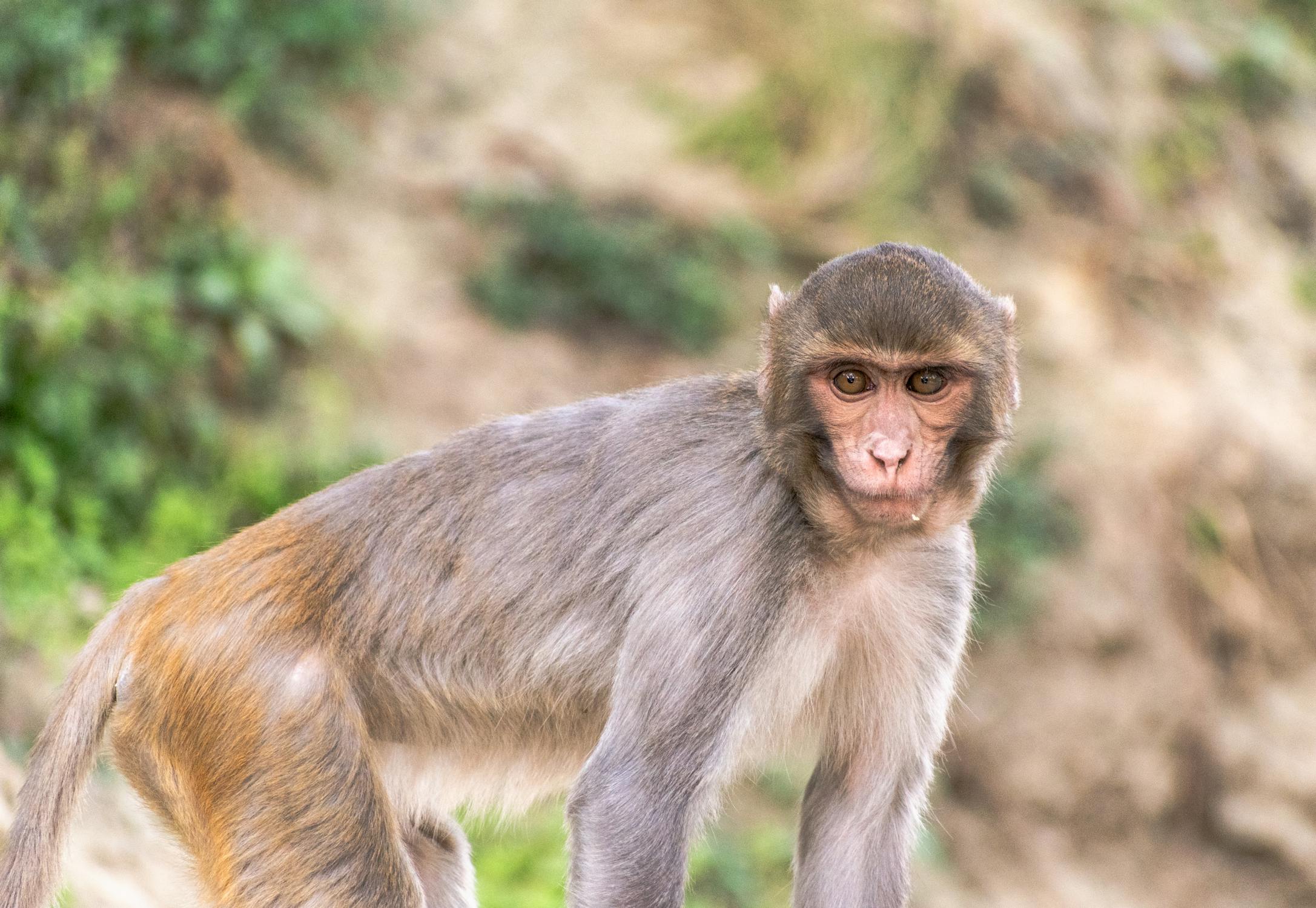An albino monkey is not a different species of monkey; rather, it’s a monkey that has a genetic condition called albinism. This condition occurs when the monkey’s body doesn’t produce enough melanin, the pigment that gives color to skin, hair, and eyes. As a result, albino monkeys have white fur, pale skin, and pink or light-colored eyes. Albinism affects animals and humans alike, making these creatures stand out due to their unusual appearance.
The Science Behind Albinism
Albinism is caused by a genetic mutation. In simple terms, a mutation is like a tiny change in the animal’s genetic blueprint. This mutation can cause a problem with the production of melanin, which is why an albino monkey’s fur and skin lack color. Albinism affects many species, but because it’s so rare, albino animals, including monkeys, often draw extra attention.
How Rare Are Albino Monkeys?
Albino monkeys are incredibly rare. Albinism in animals happens in only about 1 in 10,000 births, so it’s not something you see often. The rarity makes albino monkeys even more fascinating because spotting one is like finding a needle in a haystack. In fact, many people go their whole lives without ever seeing an albino monkey in the wild.
How Does Albinism Affect a Monkey’s Life?
Albinism can create some challenges for albino monkeys. Their bright white fur makes it hard for them to blend into their surroundings, which can make them more vulnerable to predators. In the wild, animals rely on camouflage to hide from danger, but albino monkeys don’t have that advantage.
The condition can also affect their eyesight. Many albino animals, including monkeys, have sensitive eyes that can’t handle bright light very well. Their vision might not be as sharp as normal monkeys, which can make it tough for them to navigate through the trees or spot predators in time.
Albino Monkeys in the Wild
In the wild, albino monkeys face a lot of challenges. Since they stand out, they are more likely to be seen by predators. Some monkeys might even be shunned or treated differently by their troop because of their unusual appearance. Monkeys, like humans, can sometimes treat individuals who look different unfairly.
But despite these obstacles, albino monkeys can still survive in the wild, especially if they live in protected areas like national parks or wildlife reserves. In these places, they are less likely to be hunted by predators or captured by poachers, giving them a better chance at survival.
Albino Monkeys in Captivity
Many albino monkeys live in captivity, where they are often part of breeding programs, zoos, or research facilities. In captivity, albino monkeys don’t have to worry about predators, and their health is usually monitored closely by veterinarians. They might even be given special care to protect their sensitive skin and eyes from the sun. While life in captivity is different from the wild, it can provide a safer environment for albino monkeys.
Why Are Albino Monkeys So Popular?
There’s something about the albino monkey that draws people in. Whether it’s their striking appearance or their rarity, albino monkeys have become popular in pop culture, zoos, and among wildlife enthusiasts. People are naturally curious about animals that look different, and the albino monkey is no exception. They are often featured in documentaries, news articles, and even movies, showing just how much fascination surrounds them.
The Importance of Protecting Albino Monkeys
Like many other animals, albino monkeys need protection, especially in the wild. Due to their rarity and unique appearance, they can become targets for poachers who may want to capture or sell them illegally. In some cases, people believe that albino animals have special powers or are sacred, which can make them even more of a target.
Conservation efforts are important for protecting all wildlife, but they are especially crucial for rare animals like the albino monkey. By supporting wildlife conservation, we can help protect albino monkeys and ensure they have a safe place to live in the wild.
Famous Albino Monkeys
There have been a few albino monkeys who became famous over the years, especially those who lived in zoos or were featured in the media. One of the most well-known albino monkeys is Snowflake, a gorilla who lived in the Barcelona Zoo in Spain. Snowflake became famous for being the only known albino gorilla and lived a long life under the care of zookeepers. Snowflake’s unique appearance made him a celebrity, and he helped raise awareness about albinism in animals.
The Future of Albino Monkeys
As more people become aware of the challenges that albino animals face, there is hope that albino monkeys will continue to receive the care and protection they need. Whether in the wild or in captivity, these rare and beautiful creatures deserve to live in a world where they are safe from harm and can thrive like any other monkey. By supporting conservation efforts and raising awareness, we can help secure a brighter future for albino monkeys.
Conclusion
The albino monkey is a unique and fascinating creature, unlike any other in the animal kingdom. Its rare appearance and the challenges it faces make it a symbol of resilience and survival. Whether in the wild or in captivity, albino monkeys captivate the hearts of those who see them. And while they may face difficulties because of their condition, they are still an important part of the animal world, deserving of our care and protection.







Leave a Reply